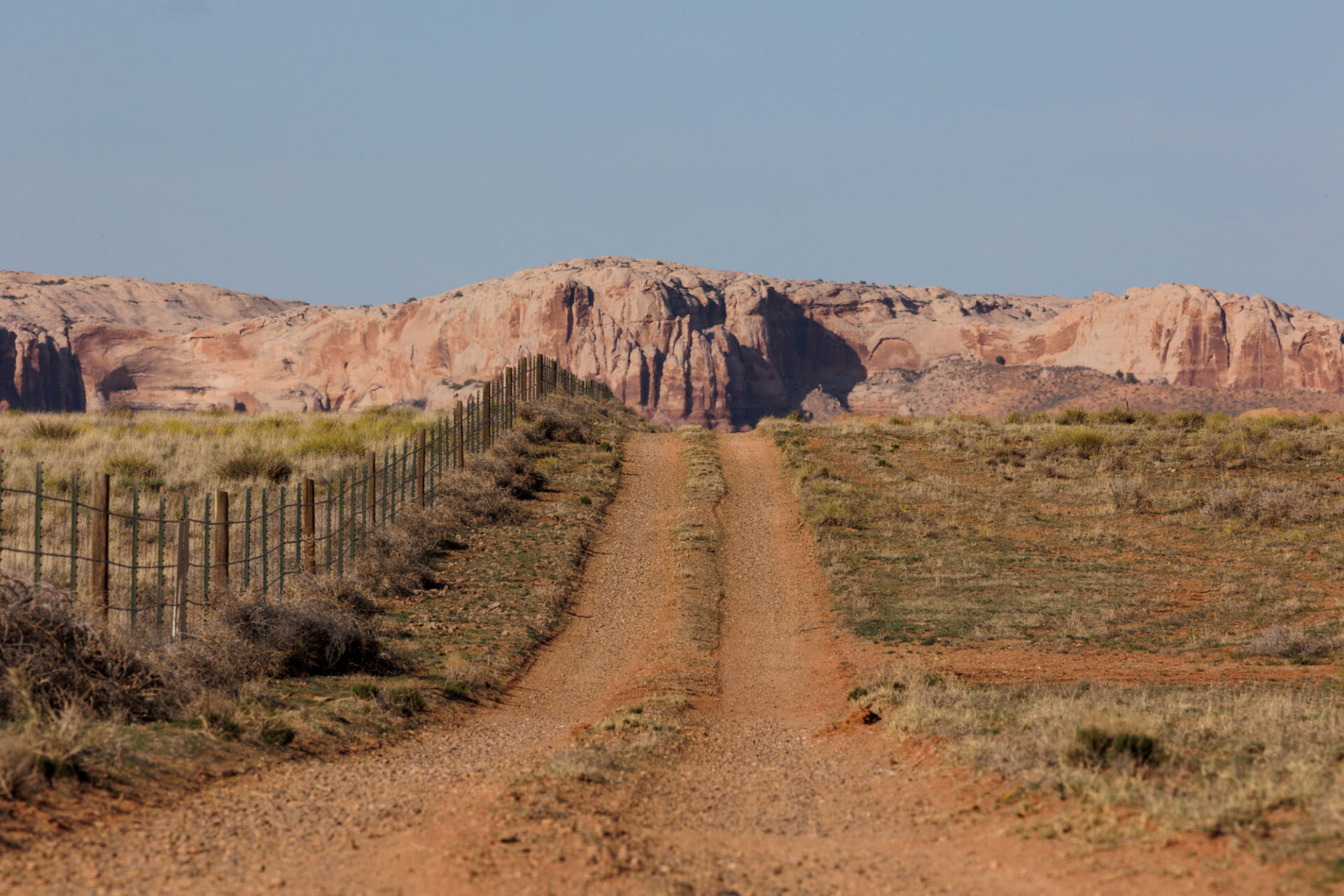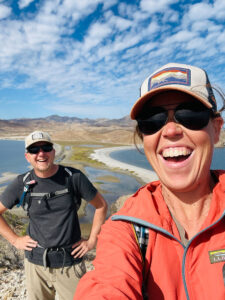After six weeks camping in Arizona, it felt good to cross the border into Utah. Utah is an incredible state, diverse in landscape, with an immense amount of free camping opportunities. We decided to return to a spot near the small, remote town of Bluff that we’ve previously enjoyed. Nearby Comb Ridge is one of our favorite geological features in the west and we were hoping to stay a week so that we could get a couple of good hikes in.
On our first morning we set out for a walk. It was warm enough that a t-shirt would suffice and was noticeably warmer out than our previous spring trips through Utah. About halfway into our walk Mark pointed out snake tracks in the road. The road surface alternated between rock and fine dirt, and here, in the fine dirt, we could see that a snake had slithered past. We were feeling casual about it until the unmistakeable sound of a rattle 30 seconds later. Unfortunately I reacted in the worst possible way, impulsively and erratically. My body said run before my brain could even determine which was the best direction to run in. Mark, on the other hand, stopped dead in his tracks. A rattlesnake was less than 2’ from his feet and was warning him to back off. The way in which this creature was blending into the desert flora was unsettling although valuable to witness.
We resumed our walk, although in a slower and more attentive fashion, only to begin noticing snake tracks everywhere. In the last 100 yards to our camp there were at least dozen holes in the ground with snake tracks spilling out of them. We were having a hard time believing our eyes. Either the guy we just met had a VERY active morning, or, he has a lot of friends around here.
We returned home feeling rattled (I can’t help myself, I love a good pun). One snake is one thing, but multiple venomous snakes is another. Something about the s on the end of that word sends shivers down both our spines. Mark goes on to do what he does, consult google to become better informed about what we’re dealing with. Typically knowledge eases his mind but in this case it did the opposite. It turns out that rattlesnakes congregate to hibernate together for the winter and a den can contain many, many snakes. As temps rise in the spring they leave the den and will disperse, traveling up to two miles away.
At this point we were both wide-eyed with concern and wondering what to do. It was a Friday and we didn’t feel like packing up and venturing out to look for another place to camp when every Coloradan with a camper was on their way to Utah to do the same thing. I told Mark I’d like to stay through the weekend and focus on getting some work done (a good indoor activity). I suggested that we avoid going on walks around camp and instead, if we needed to stretch our legs, drive over to the nearby Bluff airport to walk on tarmac.
The next morning while we’re walking around the airport wondering if we’re overreacting we come within 2’ of a baby rattlesnake. Against the deep black asphalt it looked like a stick, until it began slithering away. I had previously thought that as long as we kept our eyes open and glued to the ground, we would be able to see a snake around our campsite. After seeing this baby rattler, that was the exact same color as the dirt, I knew there was no way. And seeing two in a 24 hour period confirmed we weren’t dealing with just one very active snake.
If you don’t know much about rattlesnakes, the reason we fear them is that their venomous bite can be extremely painful and lead to severe, or even life-threatening, symptoms. Seeking medical attention as quickly as possible is necessary and doing so within 30 minutes is ideal. (We are very rarely within 30 minutes of a medical facility.) Symptoms worsen over time and can lead to severe organ damage or death within 2-3 days. A past client of ours stepped on a rattlesnake at a concert, was treated by paramedics right away, and spent nearly a month in the hospital.
The only good news is that they’re not aggressive. The only reason they will bite is if they feel threatened. But they blend in so easily to their surroundings that even if you’re paying attention you can come within close proximity of one and not know it until they warn you with their rattle (though a warning isn’t always guaranteed). Our two encounters showed us how quickly and easily you could step on a rattlesnake.
People ask us if we’re ever scared traveling to the wild and remote places that we do. But what about bears and axe murderers and, when we’re in Mexico, the cartel? We smile and shake our heads no. We use or instincts and common sense to guide us and generally find that the world is a much safer place than our imagination makes it out to be. This was the first time we felt like we were somewhere we really shouldn’t be. (We’ve experienced two occasions of our gut telling us to leave a place, but this was the first time we dealt with evident danger) We thought we could hang out for the weekend and simply be extra careful but after seeing a second snake we decided to not tempt fate. We very carefully packed up (imagining scenarios like a snake coiled up in one of our wheel chalks) and moved on.
This is the thing about staying safe while living a nomadic lifestyle; every place, whether in a city, a small town, or out in the middle of nowhere, has its inherent risks. It doesn’t matter if you live in a house or a vehicle, life comes with risks. And so you can approach life on the road in one of two ways. 1) Live in a state of ignorant bliss and hope for the best. (I say this completely free of judgment, we’re all ignorant about something until we’re not.) Or 2) hone your awareness and get really good at paying attention to your surroundings. When something feels off or there are signs that point to a potential danger, leave.
A girl in search of a campsite just the other day asked us if she should be concerned about bears. She was from Maine and knew nothing about the area. We told her bears were not in this region but that she should keep her eyes open for rattlesnakes. She had no idea. Watching out for bears vs. snakes are two very different things. Eyes up for bears, eyes down for snakes.
Talk to people when you travel to unfamiliar areas. Read reviews on camping apps like iOverlander. Stop into a ranger station or visitor center and ask questions. Carry a well-stocked first aid kit and learn how to listen to your gut.
Lastly, don’t camp near the airport in Bluff. That’s where the snakes live.
If you enjoy the stories we share, you can support our travels by shopping on Amazon via this link or the links to the products above. At no additional cost to you, we will earn a commission if you purchase through the links provided. Thank you for being here!



Wow! That was scary! I’m so glad you decided to leave. I’m also glad your so aware of your surroundings.
It was quite an experience. I am so gratefu that Mark is always keeping an eye on tracks.